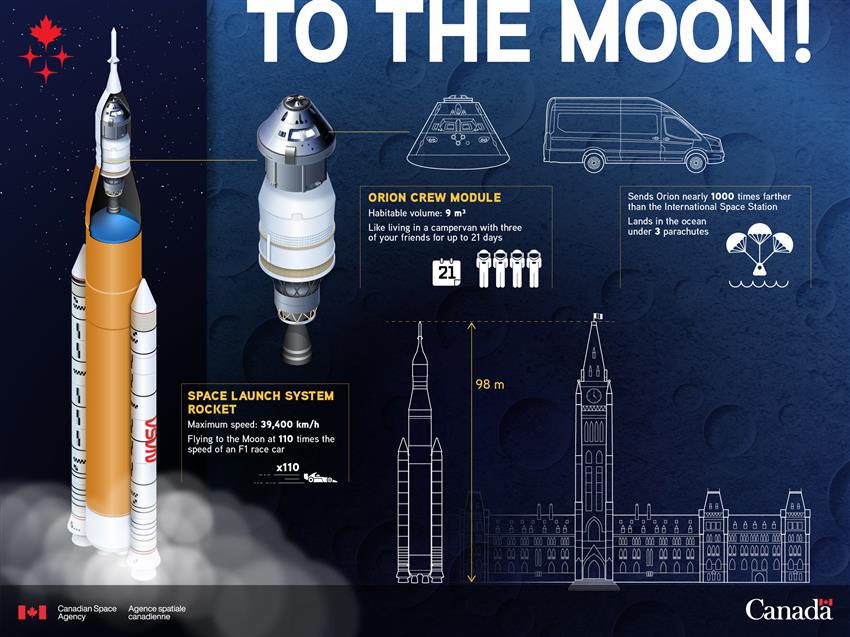The Space Launch System rocket and the Orion spacecraft

The Space Launch System (SLS) rocket and the Orion spacecraft are humanity's ticket back to the Moon. The powerful duo proved themselves during the uncrewed Artemis I test flight, and in they will team up to send a crew around the Moon during Artemis II.
The SLS
NASA's SLS is a rocket designed to help return humans to the Moon, establish a long-term presence there, and set the stage for human exploration of Mars.
The SLS is designed to be evolvable, and future versions will be able to carry Orion and other large payloads to space, according to mission destination and requirements.
No other rocket can send astronauts and the Orion spacecraft directly to the Moon in a single mission. As during the Artemis I mission, the SLS rockets that will power Artemis II and III are in the Block 1 configuration. Larger, more powerful configurations will send crews and large cargo to lunar orbit in later missions. Every SLS configuration uses the core stage and its four RS-25 engines. Two solid rocket boosters also provide more than 75 percent of the vehicle's thrust during the first two minutes of flight.
During each lunar mission, the SLS will launch the crew in Orion to space and help set them on course to venture to the Moon. To do this, the SLS must have enough power to perform a manoeuvre known as a trans-lunar injection. This manoeuvre accelerates the spacecraft from its orbit around Earth onto a trajectory toward the Moon. During Artemis II, Orion's European Service Module will provide this massive push! The ability to send more mass to the Moon on a single mission makes exploration simpler and safer.

Text version - To the Moon! – Infographic
Orion is a new exploration vehicle that will carry Artemis crews to space. It is designed to be launched by NASA's SLS rocket, one of the most powerful rockets in the world. (Credit: Canadian Space Agency)
The Orion spacecraft
The Orion spacecraft is composed of three main elements:
- The Crew module, the habitable portion of the spacecraft where crews will live and work on their journey to the Moon and back
- The Service module, provided by the European Space Agency, which equips Orion with power, propulsion, thermal control, air, and water
- The Launch Abort System, which is designed to quickly activate and pull Orion to safety, away from the SLS rocket, in case of issues during launch
During the uncrewed Artemis I test flight, the capsule did not contain the life-support systems required for crewed missions. Orion will be outfitted with these systems for Artemis II and future missions.
Animation of the trajectory of the Artemis II mission, the first crewed mission to the Moon since 1972. (Credit: Canadian Space Agency, NASA)
Guidance and navigation
On board Orion, an advanced guidance, navigation, and control system uses an array of sensors to calculate the spacecraft's position in space. Some of these sensors are:
- Star trackers, sensitive cameras which take images of the star field around Orion
- Optical navigation cameras, which take images of Earth and the Moon to keep Orion on course
- Sun sensors, located on the European Service Module, which ensure Orion keeps its solar panels pointed in the correct direction


